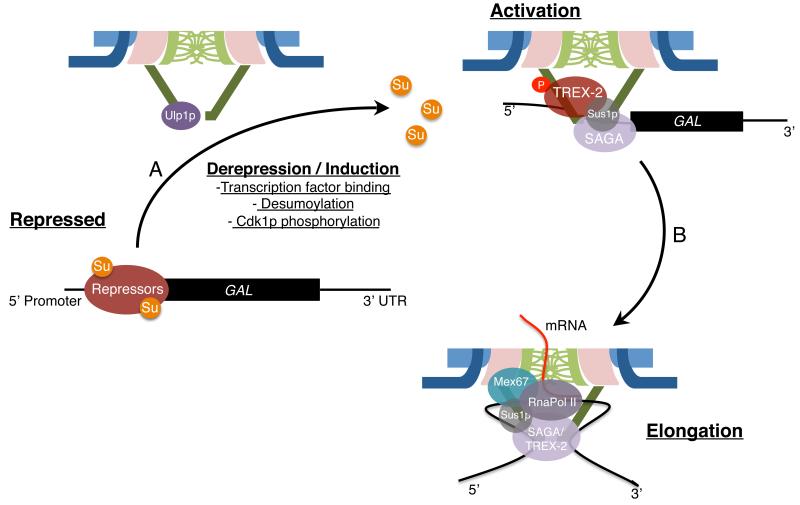Figure 3.
NPC-GAL gene association and transcription. A. Shifting from glucose to galactose-containing media initiates derepression and activation of GAL genes. This process is accompanied by the translocation of the locus from the nucleoplasm to NPCs in a manner dependent upon transcription factor binding to upstream activating elements in the promoter as well as the association of chromatin remodellers (SAGA) and mRNA export factors (TREX-2) with specific Nups. Cdk1p-dependent phosphorylation of Nup1p aids in facilitating its interaction with TREX-2 and stabilizes NPC-gene association. At least for GAL1, formation of this integrated complex is promoted by the removal of SUMO (Su) from Ssn6p, a member of the repressor complex, by the NPC-bound SUMO isopeptidase Ulp1p. B. Once activated, GAL genes remain associated with NPCs. 5′ and 3′ ends of these loci are linked to the nuclear basket, which is thought to induce the formation of gene loops that aide in bringing 5′ mRNA capping and 3′ processing factors to NPCs (not shown). The ORF also associates with NPCs through the formation of a highly integrated complex centered around the RNA pol II elongation complex that includes both SAGA and TREX-2. Mex67p appears to provide a bridge between the elongation complex and NPCs. The TREX-2 component Sus1p links Mex67p to the RNA pol II complex. These interactions contribute to the positioning of the ORF in close proximity to the NPC

